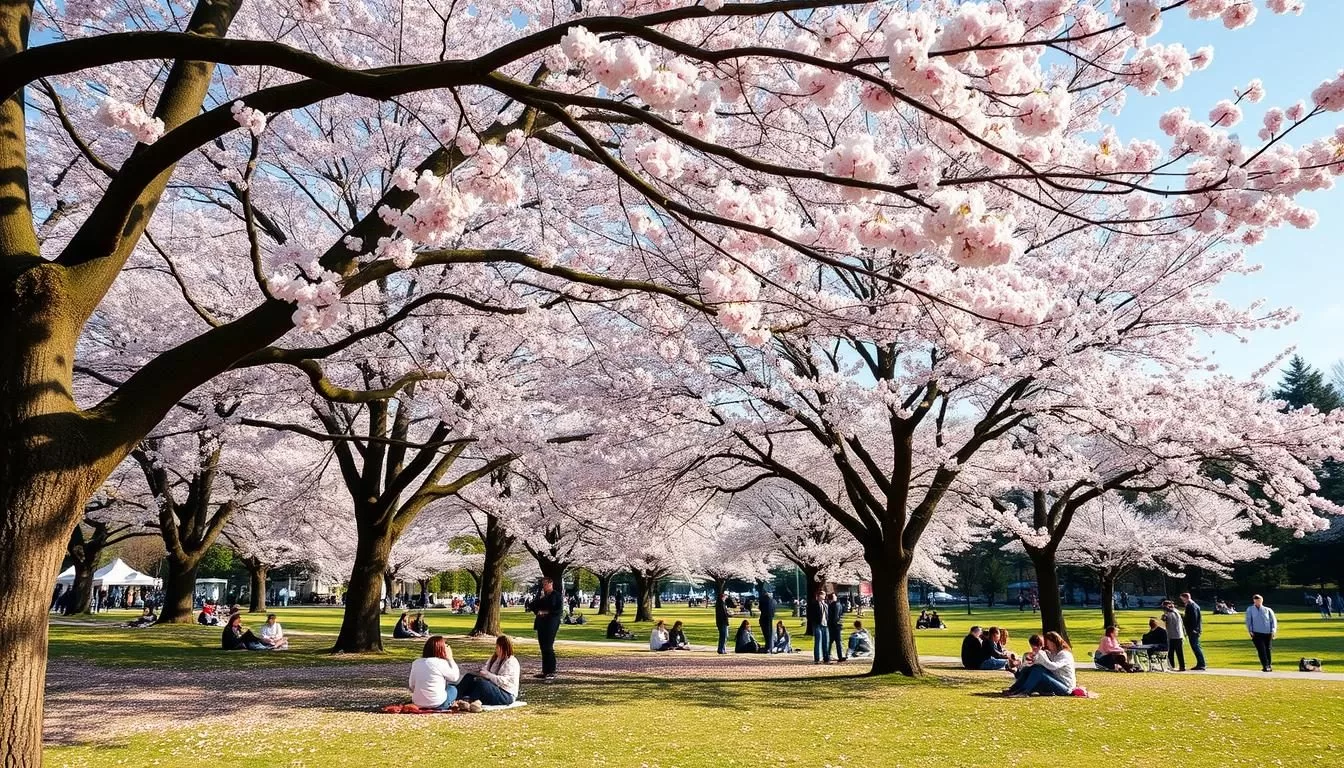✓ Accommodations✓ Flights✓ Rental Cars✓ Tours & Activities
Yoyogi Park, one of Tōkyō’s most cherished urban parks, is a must-visit destination for anyone looking to experience the perfect blend of nature and culture.
Yoyogi Park ( 々 , Yoyogi Kōen) is one of Tokyo’s largest parks, featuring wide lawns, ponds, and forested areas. It is a great place for jogging, picnicking, and other outdoor activities.
Before becoming a city park in 1967, the area where Yoyogi Park is located served as the site of the Olympic Village for the 1964 Tokyo Olympics, and before that, as a residential area for US military personnel.
The park stands as one of Tokyo’s most beloved urban green spaces, offering visitors a perfect blend of nature, culture, and recreation in the heart of the city.
This comprehensive visitor guide will help you navigate the park’s rich history, diverse areas, seasonal highlights, and popular activities.
You’ll discover practical information about accessing the park, the best times to visit, and essential facilities to make your experience enjoyable.
To ensure a smooth visit, here are some key points to consider: Learn about the park’s transformation from military grounds to Olympic Village to public park, and why it has become a cultural hub for both locals and tourists.
Whether you’re planning a relaxing picnic, hoping to see cherry blossoms, or wanting to experience Tokyo’s vibrant street culture, this guide provides everything you need to know about Yoyogi Park.
Discovering Yoyogi Park: Tokyo’s Urban Oasis
Yoyogi Park, a sprawling 54.1-hectare green space, offers a serene getaway in the midst of Tokyo’s bustling landscape. This vastareais not just aplaceto relax; it’s an integral part of Tokyo’s urban fabric, hosting various events and activities that reflect the city’s vibrant culture.
As one of the largestparks in Tokyo, Yoyogi Park is conveniently located next to the trendy Harajuku district, making it an easily accessible destination for tourists and locals alike. The park’s diverse landscape includes wide open lawns, forestedareas, serene ponds, and dedicated spaces for sports and recreation, providing a uniqueviewinto Tokyo’s way of life.
Visitors can enjoy a wide range ofexperiences, from meditation and yoga to lively street performances and cultural festivals. The park’s relaxed atmosphere allows various activities to coexist, making it a fascinatingplaceto observe Tokyo’s social tapestry. Whether you’re interested innature, culture, or simply people-watching, Yoyogi Park is a must-visit destination that offers a refreshing escape from the city’s fast pace.
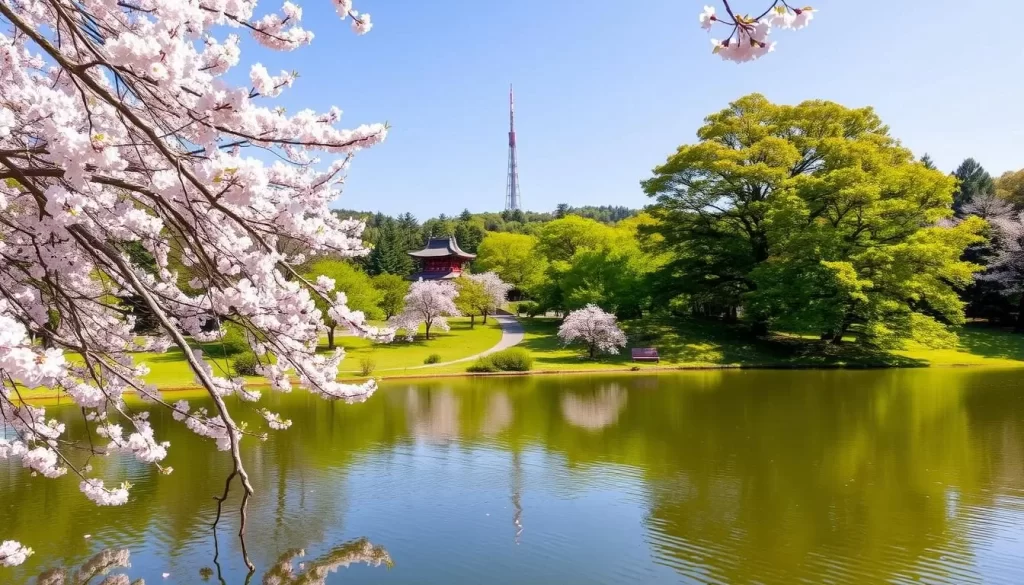
The Rich History of Yoyogi Park
As you stroll through Yoyogi Park, you’re walking through a piece of Tokyo’s history, shaped by significant events and transformations. This park has evolved over the years, becoming an integral part of the city‘s landscape.
From Military Grounds to Olympic Village
Before becoming a city park in 1967, the Yoyogi Park area was the site of the Olympic Village during the 1964 Tokyo Olympics. Initially used as military grounds, the area was repurposed for the Olympics, showcasing Tokyo’s ability to host international events.
Transformation into a Public Park
Following the 1964 Olympics, the Japanese government decided to convert the area into a public park Yoyogi Park officially opened to the public in 1967, transforming from a closed Olympic facility to an open community space. The park’s design incorporated existing natural features while adding new recreational areas, creating a multifunctional public space that represented Japan’s post-war focus on public welfare and urban quality of life.
How to Get to Yoyogi Park
Yoyogi Park is a short walk from Harajuku Station, a major hub on the JR Yamanote line. This makes it easily accessible for visitors.
Nearest Train Stations
The closest station to Yoyogi Park is Harajuku Station. To get to the park, use the Omotesandō ticket gates and exit through the west exit. Harajuku Station is conveniently located on the JR Yamanote line, making it easily accessible from various parts of Tokyo.
- Harajuku Station is the most convenient access point.
- Other nearby stations include Yoyogi Station and Meiji-jingumae Station.
Walking Routes from Harajuku
From Harajuku Station, exit through the Omotesando gates and head west. You’ll reach the park’s main entrance in about 5 minutes. The route is lined with trendy shops and cafes, offering a glimpse into Tokyo’s youth culture.
Park Layout and Areas
As you step into Yoyogi Park, you’ll discover that it’s divided into distinct areas, each offering a unique experience. This diversity is part of the park’s charm, making it a fascinating place to explore.
Forest Park Area (Section A)
The Forest Park Area, or Section A, is a serene part of Yoyogi Park. It features walking paths, gardens, and plenty of greenery, providing a tranquil escape from the bustling city. This area is perfect for those looking to relax or enjoy a leisurely stroll.
Event Space (Section B)
Section B of Yoyogi Park is known as the Event Space, hosting various events and activities throughout the year. This vibrant area is on the side of the park that’s most frequented by visitors, making it a lively spot to visit.
The “Secret” Park Area
Between Yoyogi Park and Meiji Shrine lies a lesser-known wooded area. This “secret” section offers a more tranquil experience, with winding paths through dense forest. It’s an ideal retreat for those seeking solitude or a quiet reading spot, providing a glimpse into Tokyo’s natural landscape before urbanization.

Best Times to Visit Yoyogi Park
Throughout the year, Yoyogi Park transforms with the changing seasons, making it a fascinating place to visit at any time. As you plan your visit, consider what you want to experience, whether it’s vibrant festivals or serene landscapes.
Weekday vs. Weekend Experience
Visiting Yoyogi Park on a weekday offers a more relaxed atmosphere, ideal for those seeking tranquility. In contrast, weekends are livelier, with more street performers and visitors. If you’re looking for a peaceful stroll, weekdays are recommended.
Seasonal Considerations
Yoyogi Park is beautiful throughout the year. Spring brings cherry blossoms, while summer offers lush greenery and festivals. Autumn transforms the park with golden ginkgo trees, and winter provides a serene, snowy landscape. Each season offers a unique experience, making Yoyogi Park a great destination throughout the year.
Spring at Yoyogi Park: Cherry Blossom Season
Spring in Tokyo is synonymous with Yoyogi Park’s stunning cherry blossom display, a true natural wonder. As one of the city’s most beloved parks, Yoyogi Park offers a unique spring experience that attracts visitors from all over the world.
When to See the Cherry Blossoms
The cherry blossom season typically peaks in late March to early April, but the exact timing can vary from year to year. It’s essential to check the latest forecasts before planning your visit to Yoyogi Park during spring.
Hanami Picnicking Tips
Hanami picnics are a cherished tradition in Japan, and Yoyogi Park is an ideal spot. To make the most of your visit, consider the following tips:
- Arrive early to secure a good spot, especially on weekends.
- Bring a waterproof picnic sheet to keep your seating area dry.
- Stock up on food and drinks from nearby convenience stores.
- Remember to take all trash with you when you leave.
Autumn in Yoyogi Park: Golden Ginkgo Trees
The ginkgo trees in Yoyogi Park turn golden in autumn, creating a breathtaking view. As the season progresses, the park’s impressive collection of ginkgo trees transforms into a golden spectacle, rivaling the beauty of spring.
Best Time to Visit: Late November to early December is ideal for viewing the autumn colors, with the golden ginkgos creating a striking contrast against the blue sky. You can enjoy a less crowded alternative to some of Tokyo’s more famous fall color spots.
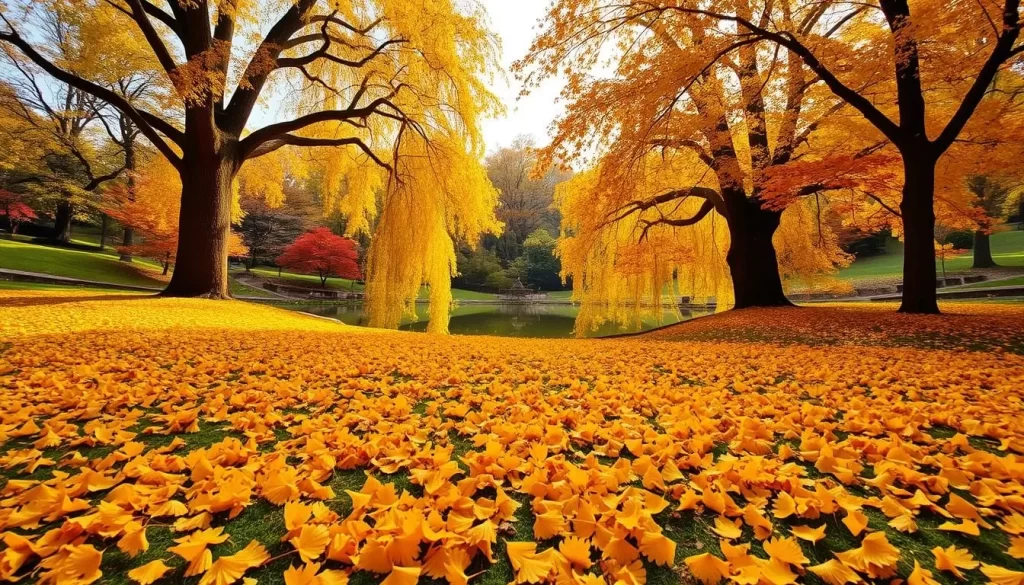
Morning visits offer the best light for photography, and the cooler autumn temperatures make it an ideal time for longer walks through the park’s wooded areas. The falling ginkgo leaves create a golden carpet, adding to the magical atmosphere.
Yoyogi Park, Tōkyō, Japan: Visitor Information and Practical Tips
Before you head to Yoyogi Park, it’s essential to know the basics to ensure a smooth and enjoyable experience. This section will guide you through the essential visitor information and practical tips to make the most of your visit.
Opening Hours and Admission
Yoyogi Park is open daily from 24 hours, and admission is free of charge. The park’s accessibility and free admission make it a popular destination for both locals and tourists.
Facilities and Amenities
The park is equipped with various amenities to enhance your visit. However, it’s worth noting that, like many Tokyo parks, Yoyogi Park has limited trash bins, primarily located near major entrances. Visitors are encouraged to take their trash with them when leaving.
Other facilities include designated bike paths for cyclists, who are also requested to walk their bicycles in crowded areas to ensure pedestrian safety. The park also accommodates various activities, though certain rules apply.
Park Rules to Remember
To ensure a pleasant experience for all visitors, certain rules are in place. For instance, while alcohol consumption is permitted, public intoxication is discouraged. Smoking is allowed but should be done away from crowded spaces and children’s facilities. Additionally, barbecues and open fires are strictly prohibited within the park.
- Take your trash with you when you leave, as waste bins are limited.
- Enjoy alcohol responsibly, as public intoxication is not tolerated.
- Respect the no barbecue rule to keep the park safe and clean.
- Smoke in designated areas, away from crowds and children’s play areas.
- Cyclists should follow bike paths and walk their bikes in congested areas.
Popular Activities in Yoyogi Park
In the midst of Tokyo’s fast-paced environment, Yoyogi Park stands out as a recreational haven with plenty to offer. Visitors can enjoy a variety of activities that make their visit memorable.
Picnicking and Relaxation
You can unwind in Yoyogi Park by picnicking or simply relaxing amidst nature. The park’s serene atmosphere makes it an ideal spot to calm your mind.
Jogging and Cycling
For those who prefer more active pursuits, Yoyogi Park offers jogging and cycling paths. You can enjoy a leisurely jog or cycle around the park’s scenic routes.
People-Watching and Street Performances
The park is also a great place for people-watching and enjoying street performances. You can observe the diverse crowd and be entertained by local performers.
Dog Run Area
If you’re a dog owner, you’ll appreciate the dedicated dog run area in Yoyogi Park. It’s one of the few places in Tokyo where you can let your dog off-leash. The area is divided into sections for small and large dogs, ensuring safe play. Registration is required, including proof of rabies vaccination.
| Activity | Description |
|---|---|
| Picnicking | Relax and enjoy your meal in a serene environment |
| Jogging/Cycling | Engage in physical activity on the park’s designated paths |
| People-Watching | Observe the diverse crowd and enjoy street performances |
| Dog Run | Let your dog play off-leash in a safe, designated area |
The Famous Rockabilly Dancers
As you stroll through Yoyogi Park, you’re likely to come across the energetic rockabilly dancers who have become a staple of the park’s culture. These dancers gather to perform and practice, creating a lively atmosphere that attracts people from all walks of life.
When and Where to Find Them
The rockabilly dancers can typically be found on Sundays, gathered near the park’s main entrance. They put on an energetic show, dancing to rockabilly music and showcasing their best moves. If you’re visiting Yoyogi Park on a Sunday, it’s worth stopping by to watch and enjoy the spectacle with others.
Etiquette for Watching and Photography
While the dancers perform for the enjoyment of the crowd, it’s essential to be respectful. Photography and videography are welcomed, but be mindful of those who may not want to be photographed. Maintain a respectful distance to avoid interfering with their performance space. Showing appreciation through applause is always welcome, and interacting with the dancers as fellow park users rather than professional performers is key to a positive experience for everyone.
| Tips for Enjoying the Rockabilly Dancers | Description |
|---|---|
| Be Respectful | Maintain a distance that doesn’t interfere with the dancers’ space. |
| Photography | Ask for permission before taking close-up photos. |
| Engage Positively | Show appreciation through applause and positive engagement. |
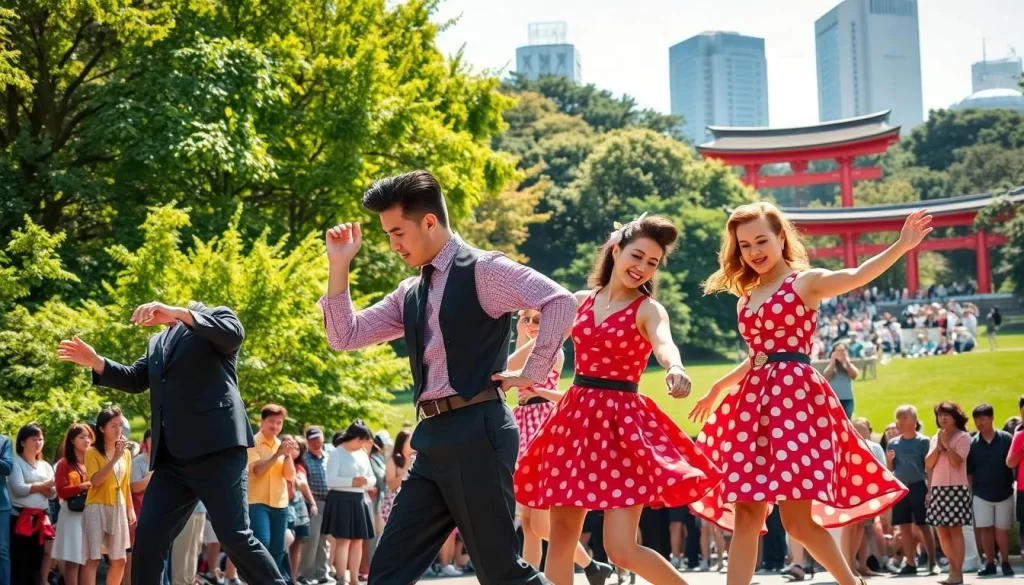
Cultural Festivals and Events
Throughout the year, Yoyogi Park transforms into a lively venue for numerous cultural festivals and events. These events showcase a blend of traditional Japanese culture and international influences, making the park a vibrant cultural hub.
International Cultural Festivals
Yoyogi Park hosts various international cultural festivals, celebrating the diversity of cultures from around the world. These festivals feature traditional music, dance, food, and crafts, offering visitors a unique cultural experience. You can enjoy the festivities and immerse yourself in the global culture.
Seasonal Celebrations
The park also celebrates Japanese seasonal traditions with various events. In the spring, you can enjoy hanami (cherry blossom viewing) with a relaxed atmosphere. Summer brings outdoor concerts and traditional Bon Odori dance events. Autumn is marked by harvest celebrations, while winter features illumination events and New Year activities.
| Season | Events |
|---|---|
| Spring | Cherry Blossom Viewing |
| Summer | Outdoor Concerts, Bon Odori |
| Autumn | Harvest Celebrations |
| Winter | Illumination Events, New Year Activities |
Food and Drink Options
Yoyogi Park is not just a haven for nature lovers, but also a paradise for food enthusiasts. You can enjoy a variety of culinary delights while strolling through the park.
Cafés Within the Park
There are several cafés within Yoyogi Park where you can relax and enjoy a meal or snack. These cafés offer a range of options, from traditional Japanese cuisine to international flavors.
Food Trucks and Vendors
food trucks and temporary vendors often set up near the main entrances and event spaces. You can savor popular street food like takoyaki and yakisoba, or explore cuisine from different cultures at cultural festivals, which often feature vendors related to the festival’s theme, somewhat like a restaurant experience.
Nearby Attractions to Combine with Your Visit
When visiting Yoyogi Park, you’re in a prime location to explore some of Tokyo’s most fascinating attractions. The park’s central location makes it easy to combine a day outdoors with visits to nearby cultural, shopping, and entertainment destinations.
Meiji Shrine
Just a short walk from Yoyogi Park is the serene Meiji Shrine, dedicated to the deified spirits of Emperor Meiji and his wife, Empress Shoken. This shrine is a tranquil escape from the bustling city, offering a glimpse into Japan’s rich history and spiritual heritage.
Harajuku and Takeshita Street
On the other side of Yoyogi Park lies Harajuku, known for its unique fashion styles and vibrant youth culture. Takeshita Street, the main shopping street in Harajuku, is lined with trendy boutiques, crepe shops, and snack stands. It’s a great place to experience Tokyo’s pop culture and find some unusual souvenirs.
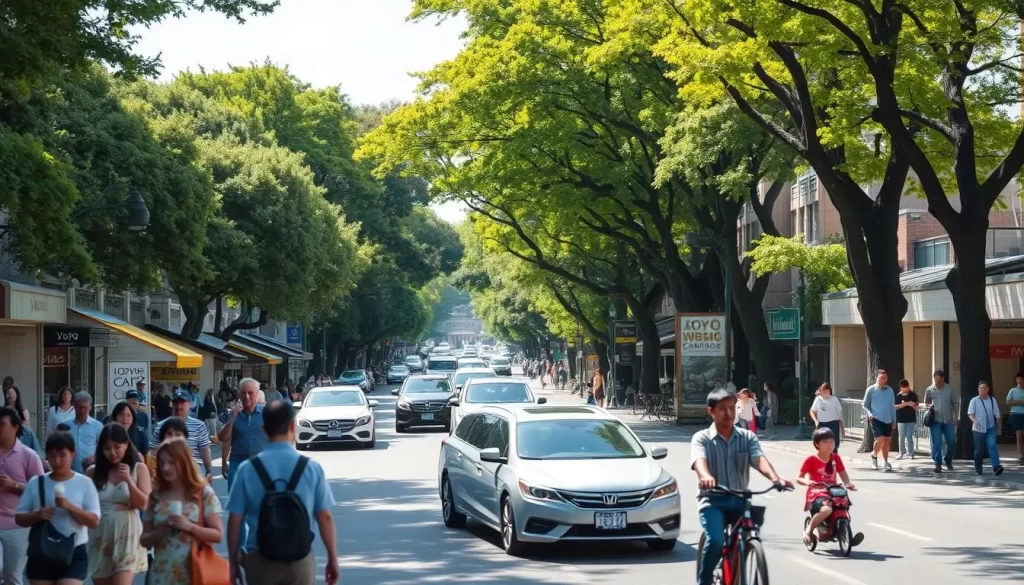
Omotesandō Shopping District
If you’re looking for a more upscale shopping experience, Omotesandō is the place to go. Located on the opposite side of Yoyogi Park from Harajuku, Omotesandō is often referred to as Tokyo’s Champs-Élysées. This fashionable avenue is home to luxury brand flagship stores, sophisticated cafes, and architectural landmarks. The area’s side streets also hide some unique boutiques and art galleries worth exploring.
| Attraction | Distance from Yoyogi Park | Main Features |
|---|---|---|
| Meiji Shrine | Short walk | Historical significance, serene atmosphere |
| Harajuku/Takeshita Street | Adjacent | Youth culture, fashion, snacks |
| Omotesandō Shopping District | Short walk | Luxury shopping, upscale cafes, architecture |
Photography Spots in Yoyogi Park
As you step into Yoyogi Park, you’ll discover a treasure trove of photography spots waiting to be captured. From serene landscapes to vibrant cultural scenes, the park offers a diverse range of subjects for photographers.
Nature Views and Landscapes
The park’s natural beauty is a haven for landscape photographers. The contrast between the park’s greenery and the surrounding urban skyline creates compelling compositional opportunities. You can capture stunning views during the changing seasons, from cherry blossoms in spring to golden ginkgo trees in autumn.
Cultural and Urban Photography
Yoyogi Park is also a hub for cultural and urban photography. The rockabilly dancers near the Harajuku entrance provide dynamic subjects, especially on Sunday afternoons. Cultural festivals bring colorful traditional costumes and performances, making for vibrant documentary photography.
| Photography Type | Best Time | Popular Subjects |
|---|---|---|
| Nature Photography | Early morning or late afternoon | Cherry blossoms, ginkgo trees, landscapes |
| Cultural Photography | Sunday afternoons, festival days | Rockabilly dancers, cultural festivals, street performances |
When photographing in Yoyogi Park, remember to be respectful of others. Some people may not want to be photographed, so it’s always a good idea to ask permission before taking someone’s picture.
Tips for First-Time Visitors
To help you navigate and enjoy Yoyogi Park like a local, we’ve put together some valuable insights and practical advice for first-time visitors. As one of Tokyo’s biggest parks, Yoyogi Park offers a unique blend of natural beauty and urban excitement, making it a must-visit destination.
What to Bring
When visiting Yoyogi Park, it’s a good idea to bring a few essentials to make your trip more enjoyable. These include comfortable shoes, a map or guide of the park downloaded on your device (since physical maps are limited), water, and snacks. Don’t forget to pack a picnic basket if you plan to enjoy the park’s wide-open lawns.
Navigating the Park
Navigating Yoyogi Park is relatively straightforward once you understand its layout. The park is divided into sections, with the central pond serving as a key landmark. Major pathways connect to this central feature, making it easy to orient yourself. You can enter the park through several gates, including the Harajuku Gate, Sangubashi Gate, and Yoyogi-Koen Station Gate, each with its own transportation links. For a guide to the park’s areas, consider downloading a map before your visit or stopping by the information center near the main entrance. Allow at least 2-3 hours for your first visit to explore the main areas without feeling rushed, making for a great travel experience.
Conclusion: Why Yoyogi Park Should Be on Your Tokyo Itinerary
With its serene landscapes and vibrant cultural events, Yoyogi Park is an ideal place to experience the essence of Tokyo. This vast urban oasis offers a perfect balance of Japanese nature, culture, and urban energy, encapsulating the Tokyo experience. As one of Tokyo’s largest parks, it provides a necessary respite from the city’s stimulation, allowing visitors to recharge.
Whether you have an hour or a full day, Yoyogi Park rewards visitors with memorable experiences. Its central location makes it an efficient addition to any Tokyo trip or guide, easily combined with visits to nearby Harajuku or Shibuya. For travelers seeking to understand contemporary Japanese culture, Yoyogi Park provides invaluable insights into how Tokyo residents balance tradition and modernity.
The above is subject to change.
Check back often to TRAVEL.COM for the latest travel tips and deals.
